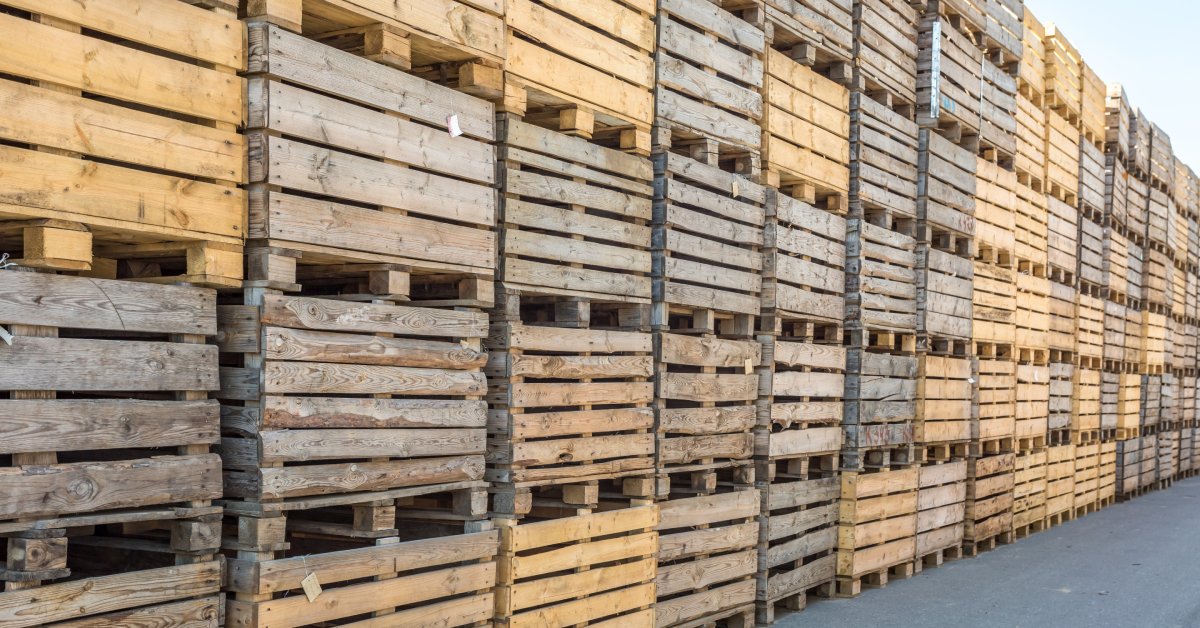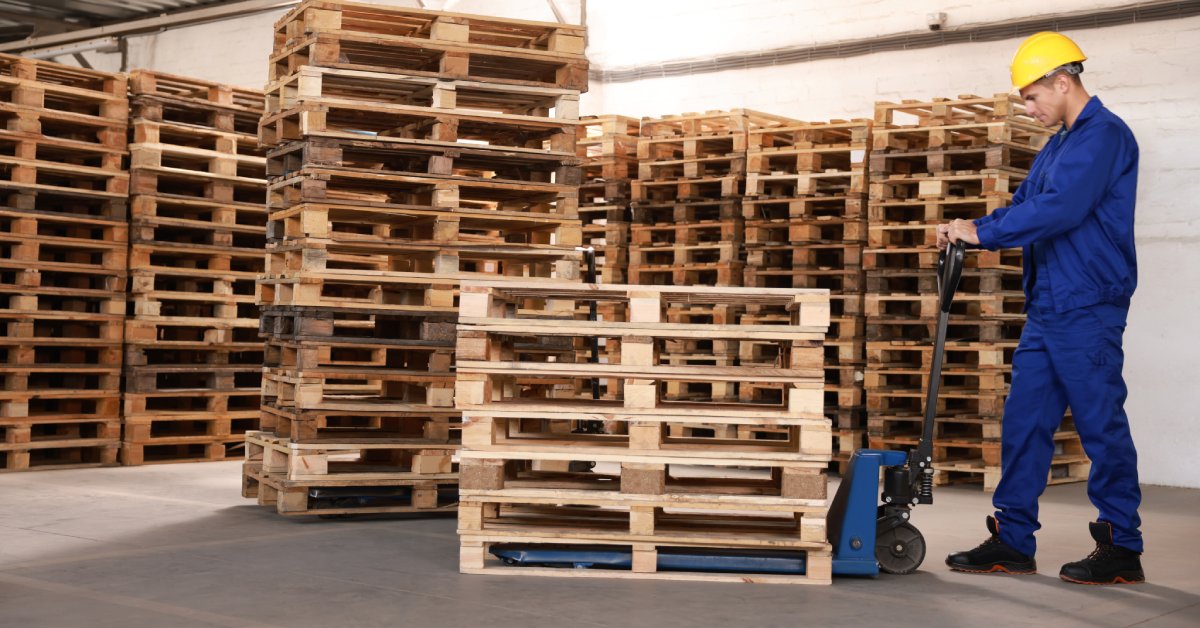Nearly all logistics and shipping industries rely on pallets. These essential pieces of equipment help us move goods, streamline warehouse operations, and create an efficient frame for widescale global trading.
While there is a wide range of pallets out there ranging in size and materials, one of the most popular options is Grocery Manufacturers Association (GMA) pallets.
No matter what type of shipping needs you have, Logical Logistics is here with a guide to GMA pallet grades and specifications. Understanding why these pallets are so popular in warehouses and factories can help you decide if they’re right for your business.
What Are GMA Pallets?
GMA pallets come from the minds and developers at the Grocery Manufacturers Association. Their main purpose is to meet the needs of various industries like food, beverage, and retrial.
Because of their attention to detail, many businesses view GMA pallets as the common standard for their reliability and consistency, enabling smoother interactions throughout supply chains. GMA pallets help optimize space and provide a uniform platform for transporting products.
These pallets fit seamlessly across different transportation modes and storage facilities. They provide standardization that eliminates a lot of guesswork for logistics professionals. They are also compatible with forklifts, pallet jacks, and other essential equipment.
What Are GMA Pallet Grades?
There are three main grades of GMA pallets: Grade A, Grade B, and Grade C. These classifications help indicate the pallet’s condition, structural integrity, and repair history. While all three grades conform to the GMA standard dimensions and functionality, they differ in durability and cosmetic appearance.
Grade A GMA Pallets
We often refer to Grade A pallets as “premium” GMA pallets. These models offer the best condition and generally require little to no repair. They feature clean and sturdy construction, so Grade A pallets exhibit few cosmetic blemishes. Nearly all their components, like stringers, fasteners, and deck boards, are in good, fully intact condition.
For industries requiring pristine and durable pallets for heavy loads, Grade A pallets are a viable option. They are ideal for exporting goods, as their appearance and functionality align with the high quality expected by international buyers. However, businesses should note that these pallets often come with a higher price point due to their condition.
Grade B GMA Pallets
Grade B pallets are slightly less pristine than Grade A but remain highly functional. These pallets typically have a repair history, meaning they may have had some work done on them to replace or reinforce parts. The integrity of Grade B pallets makes them suitable for shipments that don’t necessarily focus on aesthetic.
Many operations that prioritize utility over appearances prefer Grade B pallets. These models offer functionality and are helpful in warehouse and transportation channels. Depending on the pallet’s repair history, there could be some weight-bearing limitations. Still, their affordability makes them a popular option for businesses seeking budget-friendly solutions.
Grade C GMA Pallets
Grade C is the most economical category. These pallets have undergone heavy repairs and often show significant signs of wear. They may feature multiple stringer and deck board reinforcements. Industries with lighter loads can still greatly benefit from Grade C models.
While Grade C pallets are the least expensive option, logistics professionals should carefully evaluate their intended use. Their extensive repair history makes them less suitable for long-term durability or high load capacities.

Key GMA Pallet Specifications
When assessing GMA pallet grades and specifications, it’s a good idea to know how logistics professionals use this information to make the best choices for their business. All GMA pallets, regardless of their grade, adhere to a specific set of GMA standards to ensure compatibility and durability throughout their usage.
GMA pallet dimensions are 48 inches by 40 inches, with a weight of approximately 37 pounds. They usually support dynamic loads of up to 2,500 pounds, meaning they can safely carry this weight even while moving under forklifts or pallet jacks. For static loads—when the pallet remains stationary—the weight capacity can reach up to 4,500 pounds.
GMA pallets primarily utilize hardwood or softwood. Hardwood, such as oak or maple, offers increased durability, while softwood like pine is lightweight and easier to transport.
How GMA Pallets Differ from Other Pallets
GMA pallets stand apart from other types of pallets due to their standardized design and robust functionality. Custom pallets may struggle to meet the size and weight requirements of certain equipment options, while GMA pallets offer efficiency that works with nearly all automated systems. Custom sizes might also lead to complications when transferring goods between transportation modes.
Another key advantage of GMA pallets is their cost-effectiveness. While custom-built or specialty pallets may incur higher upfront costs, GMA pallets strike a balance between affordability and effectiveness. The widespread use of GMA pallets also supports a seamless return and repair process, further reducing expenses for companies with high pallet turnover.
Common Applications for GMA Pallets
Several industries rely on GMA pallets for their adaptability and other benefits. A few of the most common industries that utilize these pallets include retail, grocery, and food service.
Warehousing operations benefit from the compatibility of GMA pallets with forklift and conveyor equipment. These features reduce the need for customization and speed up processes like stacking, picking, and packing.

Tips for Selecting the Right GMA Pallets
Selecting the right GMA pallets can directly impact operational costs and efficiency for logistics professionals. It’s always a good idea to consider factors like the intended use for the pallets, the frequency of transport, and detailed load requirements.
For highly demanding operations, Grade A pallets are worthwhile investments. Some industries use Grade B pallets for day-to-day use since they offer a nice balance between affordability and durability.
Businesses should also consider environmental factors. For industries requiring International Standards for Phytosanitary Measures (ISPM-15) compliance, heat-treated GMA pallets are available. These pallets prevent pests and pathogens during cross-border transportation, ensuring safety and environmental security.
Advantages of Using GMA Pallets
Industries that utilize GMA pallets experience several benefits throughout the logistics process. The pallets’ standardized size makes it easy to determine space in trucks, warehouses, and shipping containers. They also offer durable construction to help preserve the quality of goods throughout transportation and reduce the likelihood of damage.
GMA pallets also save money by shortening handling times and streamlining logistics workflows. Perhaps most importantly, they provide a reliable solution to meet the needs of modern supply chains, where efficiency and consistency are essential.
Making the Most of GMA Pallets
Logistics professionals can maximize the value of GMA pallets by incorporating preventative maintenance and repair protocols. It’s a good idea to conduct regular inspections to prolong the lifespan of your pallets and reduce the chances of workplace accidents. You should partner with reliable vendors that supply GMA pallets and offer repair or buyback programs to maintain smooth operations.
Partner with Logical Logistics today to ensure your supply chain meets food-grade pallet standards while maximizing efficiency and sustainability. Contact us today to explore tailored solutions that align with your operational goals and deliver superior performance across the board.

